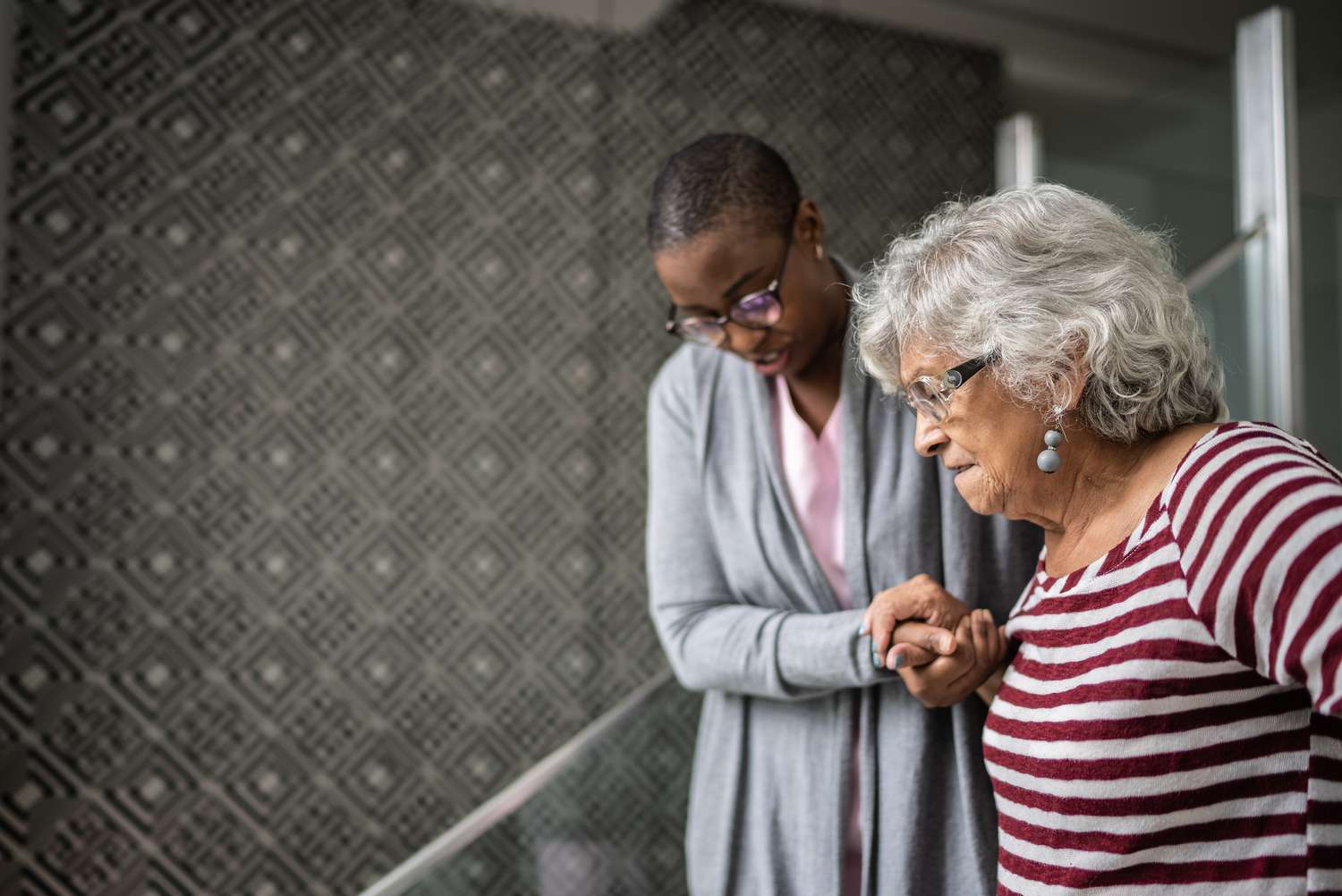
Cerebellar degeneration is a neurological disorder that affects the cerebellum, the brain's coordination center. This condition can stem from various causes, including genetic disorders, acquired injuries, and autoimmune reactions. What exactly is cerebellar degeneration? It's the chronic and irreversible loss of neurons in the cerebellum, leading to significant impairments in motor coordination, balance, and speech. Symptoms may include poor coordination, unsteady walking, difficulty with fine motor tasks, and changes in speech. Understanding cerebellar degeneration involves exploring its causes, symptoms, diagnosis, and treatment options. This article delves into 30 key facts about this complex condition, shedding light on its multifaceted nature.
Key Takeaways:
- Cerebellar degeneration causes coordination and balance issues due to brain damage. It can be genetic or acquired, with alcohol abuse and vitamin deficiencies as common causes.
- While there's no cure, treatments like physiotherapy, speech therapy, and lifestyle changes can help manage symptoms and improve quality of life for those with cerebellar degeneration.
What is Cerebellar Degeneration?
Cerebellar degeneration affects the cerebellum, the brain's coordination center. It can lead to severe motor issues, balance problems, and speech difficulties.
-
Definition of Cerebellar Degeneration: This condition involves the chronic and irreversible loss of neuronal structure and function within the cerebellum.
-
Symptoms of Cerebellar Degeneration: Symptoms include poor coordination, unsteady walking, poor balance, trouble with fine motor tasks, changes in speech, and uncontrollable eye movements.
Causes of Cerebellar Degeneration
Understanding the causes helps in managing and potentially preventing this condition. Causes can be genetic or acquired.
-
Acquired Causes: These include alcohol abuse, vitamin deficiencies, CNS infections, autoimmune disorders, and tumors.
-
Genetic Causes: Inherited disorders affecting the cerebellum, such as hereditary ataxias, fall under this category.
Types of Cerebellar Degeneration
Different types of cerebellar degeneration have unique causes and characteristics.
-
Paraneoplastic Cerebellar Degeneration: An autoimmune disorder linked to certain cancers, more common in women over 50.
-
Alcoholic Cerebellar Degeneration: Caused by chronic alcohol abuse leading to thiamine deficiency, usually affecting middle-aged individuals.
-
Nutritional Cerebellar Degeneration: Also due to thiamine deficiency, but from poor nutrition rather than alcohol abuse.
-
Hereditary Ataxias: Genetic disorders like Friedreich’s ataxia, spinocerebellar ataxia, and ataxia-telangiectasia.
Risk Factors for Cerebellar Degeneration
Certain factors increase the likelihood of developing cerebellar degeneration.
-
Age and Gender: Paraneoplastic cerebellar degeneration is more common in women over 50, while men face more balance issues as they age.
-
Alcohol Use Disorder: A history of alcohol abuse significantly raises the risk.
Prevalence and Diagnosis
Knowing how common cerebellar degeneration is and how it's diagnosed can help in early detection and management.
-
Prevalence: Relatively rare, but up to 27% of people with alcohol use disorder may have some level of cerebellar degeneration.
-
Diagnosis: Involves evaluating symptoms, medical history, and imaging exams like MRI or CT scans.
Imaging Studies and Clinical Characteristics
Imaging studies and clinical characteristics provide a clearer picture of cerebellar degeneration.
-
Imaging Studies: MRI is particularly useful for detailed images of the cerebellum and its connections.
-
Clinical Characteristics: Common symptoms include ataxia, dysarthria, and dysphagia, impacting daily activities and quality of life.
Neuropathological Characteristics
Understanding the brain's changes helps in grasping the severity of cerebellar degeneration.
- Loss of Purkinje Cells: These neurons are most susceptible, leading to chronic and irreversible deterioration of cerebellar function.
Cerebellar Degeneration in Epilepsy
Cerebellar degeneration can also be linked to epilepsy, adding another layer of complexity.
-
Association with Epilepsy: The exact mechanisms are unclear, but certain predictors have been identified.
-
Temporal Lobe Epilepsy: A type of epilepsy affecting the temporal lobe, linked to cerebellar degeneration.
-
Poor Seizure Control: Uncontrolled seizures may contribute to cerebellar degeneration.
-
Phenytoin Treatment: This antiepileptic medication can exacerbate cerebellar atrophy.
-
Whole Brain and Hippocampal Atrophy: Indicates widespread neurological damage affecting multiple brain regions.
Treatment Options for Cerebellar Degeneration
While there's no cure, various treatments can help manage symptoms and improve quality of life.
-
Physiotherapy: Exercises to improve muscle strength, balance, and coordination.
-
Occupational Therapy: Helps patients perform daily activities safely and efficiently.
-
Speech Therapy: Vital for those experiencing dysarthria, improving speech clarity and communication skills.
-
Medications: While no specific drugs reverse cerebellar degeneration, some can manage symptoms, like vitamin B supplements for nutritional deficiencies.
-
Surgical Interventions: In some cases, deep brain stimulation may be considered, though its effectiveness varies.
Rehabilitation and Lifestyle Modifications
Rehabilitation programs and lifestyle changes play a crucial role in managing cerebellar degeneration.
-
Rehabilitation Programs: A multidisciplinary approach involving physiotherapy, occupational therapy, speech therapy, and regular exercise.
-
Lifestyle Modifications: Avoiding alcohol and ensuring adequate nutrition can prevent further deterioration.
Support Systems and Research Directions
Support systems and ongoing research are essential for those living with cerebellar degeneration.
-
Support Systems: Family, friends, and healthcare providers offer emotional support and practical assistance.
-
Research Directions: Ongoing studies aim to understand whether the degenerating cerebellum can still adapt motor coordination or if other brain regions compensate.
-
Future Research: Long-term learning studies and imaging analyses are needed to clarify these questions.
Understanding Cerebellar Degeneration
Cerebellar degeneration is a tough neurological disorder affecting coordination, balance, and speech. Causes range from genetic disorders to acquired injuries and autoimmune reactions. Symptoms like poor coordination, unsteady walking, and speech changes can develop gradually or suddenly. Diagnosis often involves MRI or CT scans to confirm cerebellar atrophy. Treatment focuses on managing symptoms through physiotherapy, occupational therapy, and speech therapy. Medications and lifestyle changes, like avoiding alcohol and ensuring proper nutrition, can also help. Support systems and rehabilitation programs play a crucial role in improving quality of life. Ongoing research aims to better understand and treat this condition. By focusing on comprehensive care and symptom management, healthcare providers can help those affected lead more fulfilling lives.
Frequently Asked Questions
Was this page helpful?
Our commitment to delivering trustworthy and engaging content is at the heart of what we do. Each fact on our site is contributed by real users like you, bringing a wealth of diverse insights and information. To ensure the highest standards of accuracy and reliability, our dedicated editors meticulously review each submission. This process guarantees that the facts we share are not only fascinating but also credible. Trust in our commitment to quality and authenticity as you explore and learn with us.


